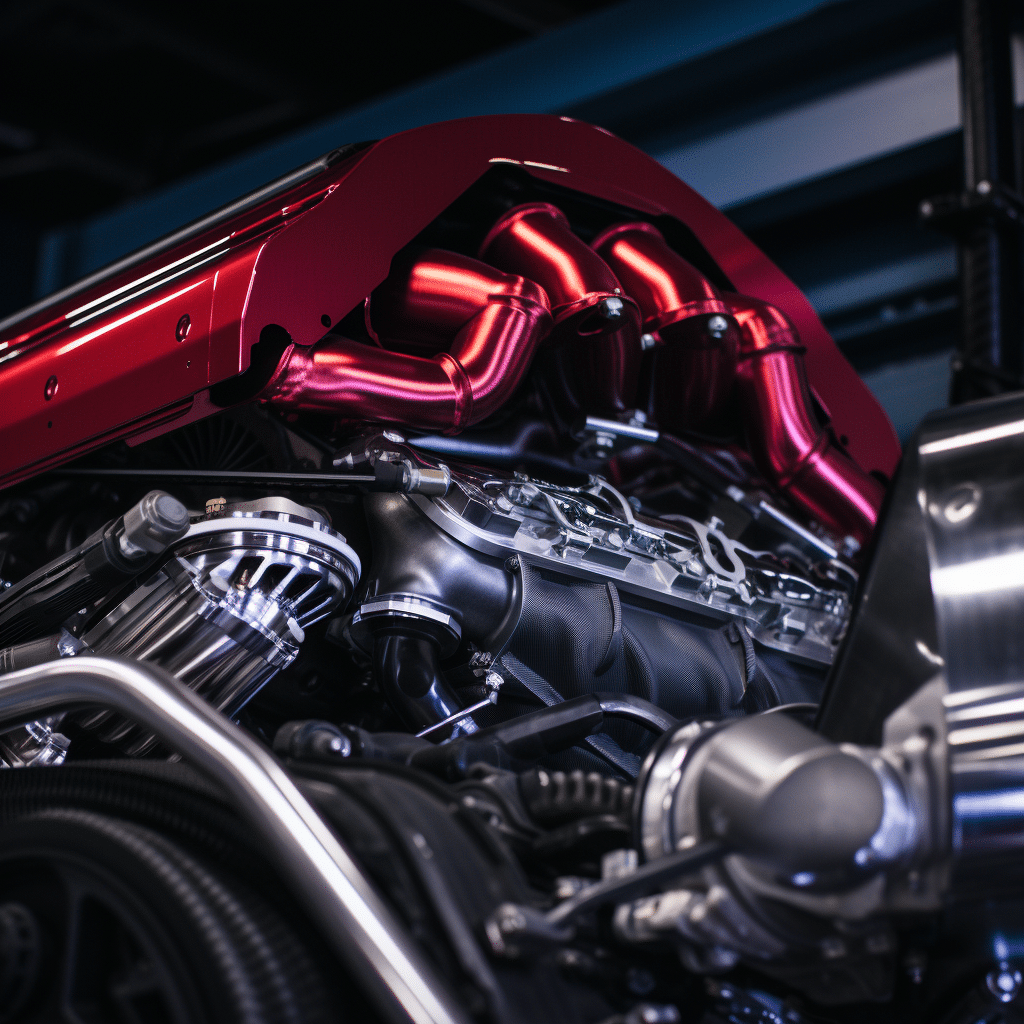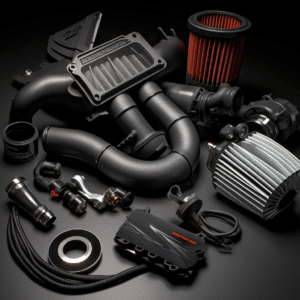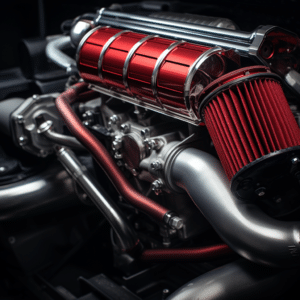
Improving Fuel Efficiency with Cold Air Intake Systems
Cold Air Intake Systems, In the winter, you probably get better gas mileage when the weather is cold. According to fuel economy tests, in city driving, gasoline cars‘ gas mileage at 20°F is about 15% less than at 77°F. For short trips of 3 to 4 miles, that margin can drop as much as 24%.
You may not know that the conventional computer-controlled engine management system compensates for lower air density by increasing fuel delivery, which can negatively affect fuel economy. This is where cold air intake systems come in handy. Not only does it cool off the intake charge and free up more horsepower, but it also lowers the combustion chamber temperature.
When a cold air intake is installed, it can increase your MPG, but this varies from truck to truck. Some drivers have claimed that their MPG increased up to 10% with a cold air intake, but this improvement will vary by type of vehicle and other factors.
Benefits of Cold air intake systems

In a world of increasing global warming, cold air intake is a creative way to bring more air and cooling effect to a car’s combustion engine. Aside from increasing MPG, boosting engine filtration, and giving more power, it is said to increase horsepower.
The primary purpose of a cold air intake is to supply the engine with sufficient air to enable the engine to function efficiently. It allows cooler air into the engine by shifting air gauze out of the engine chamber.
It is positioned so that the filters make cooler air easily accessible to the engine so that it can contribute to more power. In addition to providing more oxygen, combustion of cooler air also yields more power.
In addition to providing cooler air, cold air intakes can also increase airflow. The intake tube of an aftermarket air intake is diametrical and has fewer bends. Compared to a factory air intake, this tube is smoother, broader, and more effective in improving airflow.
How is a vehicle’s fuel efficiency determined?
Aftermarket Air Injections are a cheap mechanical solution to increase engine airflow and boost fuel economy. Engines use air and fuel-based fuel combustion for the propellant in cars. Engines operate optimally when the fuel/air ratio is 14.7:1. A stoichiometric air/fuel ratio is commonly used to measure the air/fuel ratio.
Each time the ratio varies in either direction, more fuel is consumed, but the power output is not increased, adversely impacting mileage. This may lead to you filling up more often, which is more expensive for you! The combustion process is more efficient if more air and fuel are added while maintaining the appropriate ratio.
Cold air intake systems are effective for improving your ratio and help you gain more power while maintaining the above ratio, which will improve overall fuel efficiency.
Choose the proper air intake for fuel efficiency
Engineers estimate that power efficiency increases by 1% for every 10 degrees cooler the air is. Cooler air is denser and packed with more oxygen, which guarantees fuel burns evenly.
When planning to install an aftermarket air intake system to improve performance, look to see if your car or truck’s stock air intake tubes are not already behind the grille or a bumper opening. If they are, you will still experience minor improvements in fuel economy – but they won’t be as significant.
The problem will arise if your OEM air intake pulls hot air from the engine bay. In this case, make sure you replace it with a cold air intake or ram air intake, which pulls cooler air from outside the vehicle.
There is a misperception that cooler air requires more fuel to maintain the optimal air/fuel balance, reducing fuel economy. Oxygen sensors in your car’s exhaust system detect unburned fuel, but cool, oxygen-rich air burns better. Because its fuel sensor compares air and fuel volumes, the engine always has the best air-to-fuel ratio.
Does a cold air intake provide benefits besides improved fuel economy?
As well as increasing a car’s MPG, cold air intakes provide other benefits, such as;
Reusable, efficient filter
Factory air intake filters are designed to keep harmful particles from entering the engine. Since they are disposable, you must change over the filters and over again.
In contrast to factory air intakes, cold air intake filters can be cleaned and reused every 25,000 miles. This system is more sustainable and cost-effective since you will no longer be buying new filters every few months. Besides protecting your engine from harmful particles, the filter also minimizes wear and tear on your car.
It increases power
Cold air intakes not only improve MPG and filtration but also boost horsepower. A car’s engine produces 20% more horsepower when cold air cools, because more oxygen is added during combustion. This makes your engine more efficient and allows your car to speed up better.
The difference between a factory air intake and a cold air intake

Factory air intake takes hot engine compartment air through a grille under the hood into the stock air box to filter and cool it. High-flow air filters bring cooler air from outside the engine compartment into the cool air intake system’s throttle body or original air box.
With a cold air intake your car will increase airflow into the engine, increasing fuel efficiency. Factory air intake is usually used to minimize engine sound so that cars do not make loud noises. There is no decrease or improvement in fuel efficiency.
A cold air intake allows more air to reach the engine, cools it down, and lowers emissions. Utilizing cold air intake will increase your MPG and save you money. An air intake will also allow for more horsepower and torque and increase the overall power of your vehicle.
